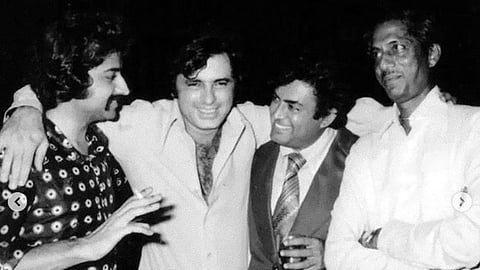Entertainment is D Company forte (4)
Following the footsteps of Haji Mastan, Dawood Ibrahim, aided by Anis Ibrahim and Abu Salim, exerted a substantial influence over Bollywood. Iconic figures like Monica Bedi, Mandakini, Sanjay Dutt, along with numerous other renowned and infamous actors, became entwined with the underworld, becoming puppets in Dawood's sphere of influence. Dazzling stars from the silver screen found themselves as Dawood's guests in Dubai, and those who declined the invitation often faced consequences, with their call-sheets torn. Tragically, individuals like the cassette king Gulshan Kumar, who resisted such influences, met untimely ends.
Facing diminishing returns in the film industry, Dawood shifted his attention to the expansive world of cricket. His interest was not in playing the sport but in influencing the outcomes of matches. Dawood became involved in match-fixing, investing significant amounts in these endeavours while simultaneously winning substantial sums through betting. The close ties he fostered with Pakistani cricketers were so extensive that he arranged the marriage of his daughter to the son of former Pakistan captain Javed Miandad. Dawood seamlessly integrated entertainment and life into his multifaceted criminal empire.
Underworld in the movie
The allure of the dark and intriguing world of the underworld has proven to be a successful and thrilling formula on the silver screen, both globally and locally, including in Malayalam cinema. Since the era of Haji Mastan, Bollywood has had direct dealings with the underworld, influencing narratives and shaping characters. This dynamic explains the recurring theme of the underworld don portrayed as a modern-day Robin Hood, akin to the legendary Kayamkulam Kochunni in Malayalam folklore. The cinematic representation of the anti-hero, epitomized by stars like Amitabh Bachchan and Anil Kapoor, reached the zenith of stardom through these roles, captivating audiences and leaving an indelible mark on the film industry.
The gangster films of the 1970s and 1980s evolved into a glorification of the underworld. The influence of the underworld extended beyond real-life activities and financing; it started making its mark even on screenplays. As a result, in the minds of moviegoers, underworld criminals began to acquire a heroic aura, becoming superhuman and idolized figures. This was a departure from conventional narratives where, in films set in jungles, the bandit played the role of the villain, with the police officer assuming the hero's mantle. In the context of underworld films, this storyline got reversed; the criminal turned out to be a charismatic character.
Amitabh Bachchan's most significant blockbusters, such as 'Sholay,' 'Deewar,' 'Don,' and 'Agneepath,' revolved around underworld plots. Oscar winner Danny Boyle even described 'Deewar' as the key to Indian cinema. Underworld narratives have not only been a staple in mainstream Bollywood but have also found representation in parallel cinema. Satyajit Ray's 'Jana Aranya' delves into the story of the Kolkata underworld, while Kamal Haasan portrayed Varadaraja Mudaliar in Mani Ratnam's film 'Nayakan'. In 2005, Time magazine recognized 'Nayakan' in its list of all-time best films.
Films like Mira Nair's 'Salaam Bombay,' as well as 'Parinda' and 'Dharavi,' starring Anil Kapoor, have portrayed the Mumbai underworld, highlighting the pervasive influence of these narratives in Indian cinema across various genres and styles.
While the influence of Francis Ford Coppola's 1972 Hollywood classic 'The Godfather' is evident in many films worldwide, the earliest model for its Indian motifs was the Mumbai underworld. Underworld-themed films in India became more realistic and less glorified by the late 90s. Ram Gopal Varma's films, including 'Satya,' 'Company,' and 'D,' have been dubbed as the Indian gangster film trilogy, although comparisons to 'The Godfather' trilogy and the 'Infernal Affairs' trilogy are considered far-fetched. Films like 'Don' have been remade in different languages, serving as evidence that the underworld criminals' superhero image has not faded, continuing to captivate audiences across various cultures and languages.
Gang war stories hold a special appeal for Malayalis, given the tradition of their people traveling to Bombay (now Mumbai) in search of work. Films like 'Abhimanyu' and 'Indrajalam' explicitly set the Mumbai underworld as their backdrop, while numerous other Malayalam films incorporate it as an indirect setting or reference point.
(The Babri Masjid demolition spread communal hatred across the country which got reflected in the underworld. More in the next part...)


